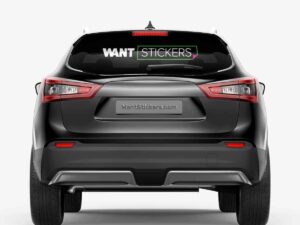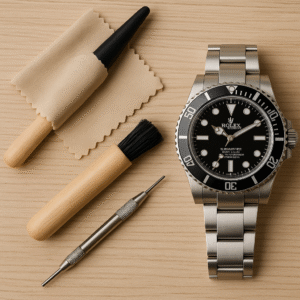Our difficulty wasn’t locating the traits of the nineties; our situation was identifying those exceptional facets of the decade which once challenged and now support current trends. Nineteen nineties traits akin to goose down evening tops, Doc Martens boots, choker necklines, and loose-fitting dresses are still incredibly popular with their own distinctive flair.
The 1980s are remembered for their volume, whereas the early 1990s were marked by minimalist ease. The slip dress, one of the decade’s most enduring garments, is perhaps the most glaring example of this. Spaghetti straps held up barely-there silk dresses, swapping the frills of the ’80s for minimalist ease. Weekends were about biker shorts and turtlenecks as well as high-waisted jeans and baggy logo tees. Hair was scraped into scrunchies or left as flouncy, unstyled manes.
The ’90s also brought forth a large number of superstar supermodels, including Linda Evangelista, who epitomized the excesses of the modeling industry early by delivering lines such as these: “I don’t get out of bed for less than $10,000 a day.”
Evangelista appeared at the finale of Versace’s Fall 1991 collection, walking arm-in-arm down the runway with Naomi Campbell, Cindy Crawford and Christy Turlington. They lip-synced the lyrics to George Michael’s hit “Freedom!’90” — the music video for which they had all starred in.
It was a very early-90s moment.
From glam to grunge
By the end of the decade, however, the effortlessly beautiful glamazon will be replaced by an age-appropriate beauty. A more beautiful, modestly attractive woman will be introduced and personified by Kate Moss.
In 1993, Marc Jacobs presented an unstructured collection for Perry Ellis that featured granny dresses, Doc Martens, and plaid shirts. He was criticized and ultimately fired for the pieces. The collection became one of the decade’s most important turning points for fashion, not to mention his career. A year later, Chanel’s Spring 1994 range also looked to the street, dressing models in skates and baggy boy-shorts accessorized with rapper’s chains. Calvin Klein presented lingerie-layered pieces that were about “the personal,” as he told Vogue, about staying in and being alone, and not flaunting what you have on your back.”
As the decade progressed, clothing moved from functional to decisively feminine. In his debut show for Gucci, Tom Ford revolutionized the luxury label’s public perception, presenting avant-garde velvet trousers and satin blouses well received by Madonna at the MTV Video Music Awards in 1995.
In the early 2000s, Alexander McQueen pioneered a cutting-edge genre of theater with a series of experimental productions, including 1997’s La Poupe E (The Doll), in which models with an array of metal restraints were featured.
During the 1990s, for a generation of youth raised on MTV and the fictional lives of fellow adolescents — Beverly Hills, 90210 and Bel-Air, to name just a couple — fashion came to be defined as a mix of preppy garments (duster coats, plaid miniskirts, knee-high boots) and slouchy cardigans, ripped jeans, hats. Keds sneakers were cool if you were into rap; Timberland boots had to be your footwear of choice if you were into rock music. Reebok Pumps were sneakerheads’ Holy Grail and combat boots the hallmark of Kurt Cobain-enamored kids.
In the mid-1990s, tracksuits gained popularity, appearing on people in all kinds of settings. This trend would continue into the 2000s with the brand Juicy Couture.
It girls and broody boys
Just as the reruns of Friends go on endlessly, the list of celebrities who have laid the foundation of nineties style—including its fashion and style moments– is seemingly endless.
The television series “Friends” was one of the most popular sitcoms of the mid- and late-1990s, with its cast of fashionable characters setting our style standards. Jennifer Aniston’s Rachel Green with her famous haircut was a trendsetter, along with Sarah Jessica Parker’s Carrie Bradshaw on HBO’s “Sex and the City.” Alicia Silverstone brought us Cher Horowitz in “Clueless,” played by her on the big screen. Naomi Campbell and Tyra Banks were also influential. The men were broody types — see Jared Leto, Brad Pitt and Johnny Depp — and their disheveled looks embodied casual dressing, with a penchant for leather jackets, white tees and minimal tailoring.
Fashion criticism was at its peak during the decade. During the decade, anyone who was anyone made a case for elegance by sporting double-breasted blazers and waistcoats, or coordinated head-to-toe looks, which made a bigger impact when touted by celebs (Gwyneth and Brad) and all-female groups (TLC and Destiny’s Child).
In the last years of the 1990s, fashion became more daring. Hemlines got shorter, outfits flashier (Lil’ Kim owned the trend better than anyone else) and pants became increasingly low-rise. The 2000s were just around the corner, ready to make their stylistic mark on fashion.
’90s back, alright!
Today, the 1990s are experiencing a resurgence in popularity. Fashion brands have recently turned to the decade as a source of inspiration, giving us a renewed appreciation for Champion sweatshirts, Birkenstocks and Nirvana tees. On the runways, Saint Laurent, Off-White, Gucci and Prabal Gurung have rediscovered the era’s biggest trends: grunge fashion through clothing like oversized flannel shirts and combat boots; silk slips paired with chunky cardigans; and biker shorts paired with knee-high socks. Vetements’ whole raison d’être revolves around ’90s aesthetics.
The fashion industry hasn’t returned to its former glory since the 1990s. Models, for example, Naomi Campbell and Christy Turlington, are in the process of working their way back up the runway at leading clothing brands, such as Saint Laurent, Marc Jacobs, and Prada.
Justin Bieber and Hailey Baldwin successfully recreated the seductive mood of those Calvin Klein ads last year. Even “Friends” is scheduled to reunite.
We feel a nostalgia for the past that keeps drawing us back to the Victorian age.
Perhaps the style from the ’90s was defined by the usage of comfortable yet fun clothing. Or perhaps because of the fact that there were a multitude of possibilities for every person starting from harder materials like satin and tank tops to less comfortable kind like capri pants and cargo shorts.
Right now, simplicity sounds like a great idea.








